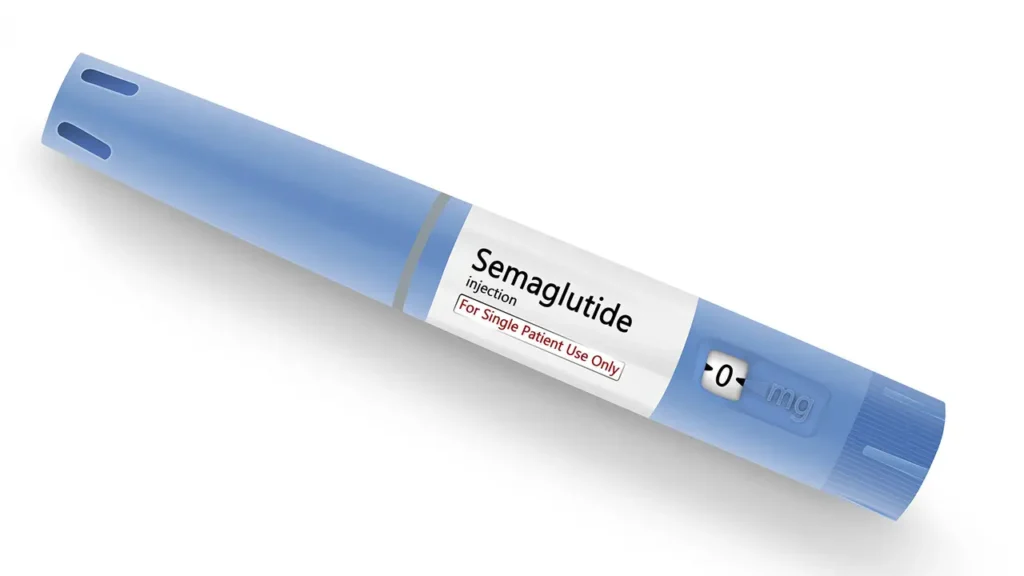Posted January 05, 2025 in Medical weight loss

Semaglutide
Semaglutide has become a leading treatment for weight management and glycemic control, particularly for patients with obesity or Type 2 diabetes. Whether you’re starting on semaglutide, considering microdosing, or planning a long-term regimen, understanding the dosing strategies is key to maximizing its benefits while minimizing side effects. In this blog, we’ll explore how semaglutide is typically dosed, the role of microdosing, and effective long-term dosing plans.
How Semaglutide Works
Semaglutide is a GLP-1 receptor agonist that mimics the action of the body’s natural glucagon-like peptide-1 hormone. By regulating appetite, improving insulin sensitivity, and slowing gastric emptying, semaglutide effectively:
- Reduces hunger and caloric intake.
- Improves blood sugar control.
- Promotes sustained weight loss when combined with lifestyle changes.
Learn more about weight management options on our Weight Loss Services page.
Standard Dosing Protocol for Semaglutide
The standard dosing regimen for semaglutide involves a gradual titration to help the body adjust and minimize potential side effects such as nausea or gastrointestinal discomfort. Here’s the typical progression:
- Starting Dose:
- 0.25 mg weekly for the first 4 weeks.
- This is a low, introductory dose aimed at helping patients acclimate to the medication.
- Titration Phase:
- After 4 weeks, the dose is increased to 0.5 mg weekly.
- This dose is maintained for at least 4 weeks, depending on patient tolerance and treatment goals.
- Therapeutic Dose:
- The dose may be further increased to 1.0 mg weekly and, eventually, up to 2.4 mg weekly for weight management (as used in Wegovy®).
- For Type 2 diabetes (Ozempic®), the therapeutic dose typically ranges between 1.0 mg and 2.0 mg weekly.
- Adjustment:
- The dosing schedule can be adjusted based on individual results and tolerability, as determined by the healthcare provider.
For detailed pricing information on semaglutide treatments, visit BuildMyBod.com.
Microdosing: What Is It and When Is It Useful?
Microdosing refers to starting semaglutide at smaller-than-standard doses and increasing gradually over a longer time frame. This approach is particularly beneficial for patients who are:
- Highly Sensitive to Medications: Individuals prone to nausea or other side effects.
- First-Time Users: Those who may need extra time to adapt to the treatment.
- Low-BMI Patients: Patients with lower body mass who may require less aggressive dosing.
Example of Microdosing Schedule:
- Week 1-4: 0.05 mg weekly.
- 5-8: 0.1 mg weekly.
- 9-12: 0.2 mg weekly.
- Gradually increase by 0.1 mg every 4 weeks until reaching the effective dose.
Benefits of Microdosing:
- Reduces risk of side effects, particularly nausea and vomiting.
- Improves adherence by offering a gentler introduction to the medication.
- Allows for more personalized treatment plans.
Drawback: Microdosing may delay therapeutic results as it takes longer to reach the effective dose.
Long-Term Dosing Strategies
Once therapeutic goals are achieved, it’s crucial to maintain results with a sustainable, long-term dosing plan. Here’s how long-term dosing can be structured:
1. Maintenance Dose:
- For most patients, the maintenance dose is the therapeutic dose at which they achieved their desired weight loss or glycemic control (e.g., 1.0 mg or 2.4 mg weekly).
- Lower doses (e.g., 0.5 mg weekly) may suffice for some individuals to maintain results with fewer side effects.
2. Tapering:
- Some patients may opt to taper their dose after achieving goals. For example:
- 2.4 mg weekly reduced to 1.0 mg weekly.
- Monitor closely to avoid weight regain or loss of glycemic control.
3. Alternate Dosing Schedules:
- For long-term users with stable results, dosing frequency may be reduced (e.g., biweekly injections at the same dose).
- This approach requires close monitoring to ensure continued efficacy.
Key Considerations for Long-Term Semaglutide Use
- Adherence:
- Long-term success relies on consistent use and adherence to prescribed doses.
- Lifestyle modifications, including diet and exercise, remain essential.
- Side Effect Management:
- Most side effects diminish over time, but long-term users should report any persistent or new symptoms to their healthcare provider.
- Monitoring:
- Regular check-ins with your provider are essential to evaluate:
- Weight stability.
- Glycemic control (HbA1c levels).
- Overall health and treatment goals.
- Regular check-ins with your provider are essential to evaluate:
- Stopping Semaglutide:
- Abrupt discontinuation may lead to weight regain or worsening glycemic control.
- If discontinuation is necessary, tapering is recommended.
Example Long-Term Dosing Plan
| Phase | Dose | Frequency | Notes |
|---|---|---|---|
| Initial Titration | 0.25-0.5 mg | Weekly | Gradually increase to therapeutic dose. |
| Therapeutic Phase | 1.0-2.4 mg | Weekly | Maintain until goals are achieved. |
| Maintenance Phase | 0.5-2.4 mg | Weekly or Biweekly | Adjust based on individual response. |
Who Should Avoid Semaglutide?
Semaglutide is not suitable for everyone. Avoid use if you:
- Have a personal or family history of medullary thyroid carcinoma (MTC).
- Have Multiple Endocrine Neoplasia syndrome type 2 (MEN 2).
- Are pregnant or breastfeeding.
- Have a known hypersensitivity to semaglutide.
Always consult your healthcare provider to ensure semaglutide is right for you.
Why Choose Mountcastle Medical Spa for Semaglutide Treatments?
At Mountcastle Medical Spa & Laser Center, we offer personalized care for patients exploring weight management and glycemic control with semaglutide. Our team provides:
- Expert guidance on dosing strategies.
- Tailored treatment plans, including microdosing options.
- Comprehensive support for long-term success.
Contact us today to schedule a consultation and start your journey to better health with semaglutide.
- Phone: 571-266-1776
- Email: info@mountcastlemedicalspa.com
- Website: www.mountcastlemedicalspa.com
- Location: Ashburn, Virginia
Let us help you achieve lasting results and improved well-being!
